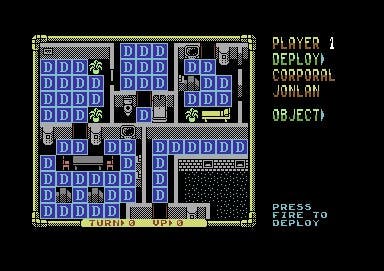LaserSquad
Turn based tactical treats.
Already pioneers of the turn based tactics game with the various incarnation of the Rebelstar franchise, Julian Gollop's team put together a sequel that reinvented their own brilliantly innovative concept with Laser Squad.
Originally released on the Spectrum, the C64 version followed quickly and raised just as many reviewer's roofs as Clive Sinclair's machine managed. Although Laser Squad is widely considered a sequel to the Rebelstar games, its real heritage is in inspiration only. All the tactical strategies previous to Laser Squad were prototypes leading up to this final and extreme culminating point - the first time gamers could not only lead, but actively control and entire squad of elite soldiers.
This is the real brilliance of what Gollop achieved, and something we take quite for granted these days. The 8-bit machines were so massively restrictive in what they allowed a developer to achieve, the sheer code-mechanics of a full squad of soldiers under human control was utterly unfeasible. But by segmenting the timeline of the awesomely conceived futuristic missions, players were allotted a finite number of action points - each step, each shot, each command given to the troops cost a point, and when they were used up, it was the enemies turn.

The variety and complexity of Laser Squad's missions (which were gratefully extended by way of mail order expansion packs) were comparable only to the remarkable air of action that permeated the gameplay - an extraordinary feat of game design considering the non-linear timeline and protracted strategising between movements.
Laser Squad is one of those benchmark titles that defined a generation and a genre, yet seems to have been retired from public memory before it's time. Much of what makes modern games great is owed to Gollop and his staggering vision of turn based tactical gameplay.
